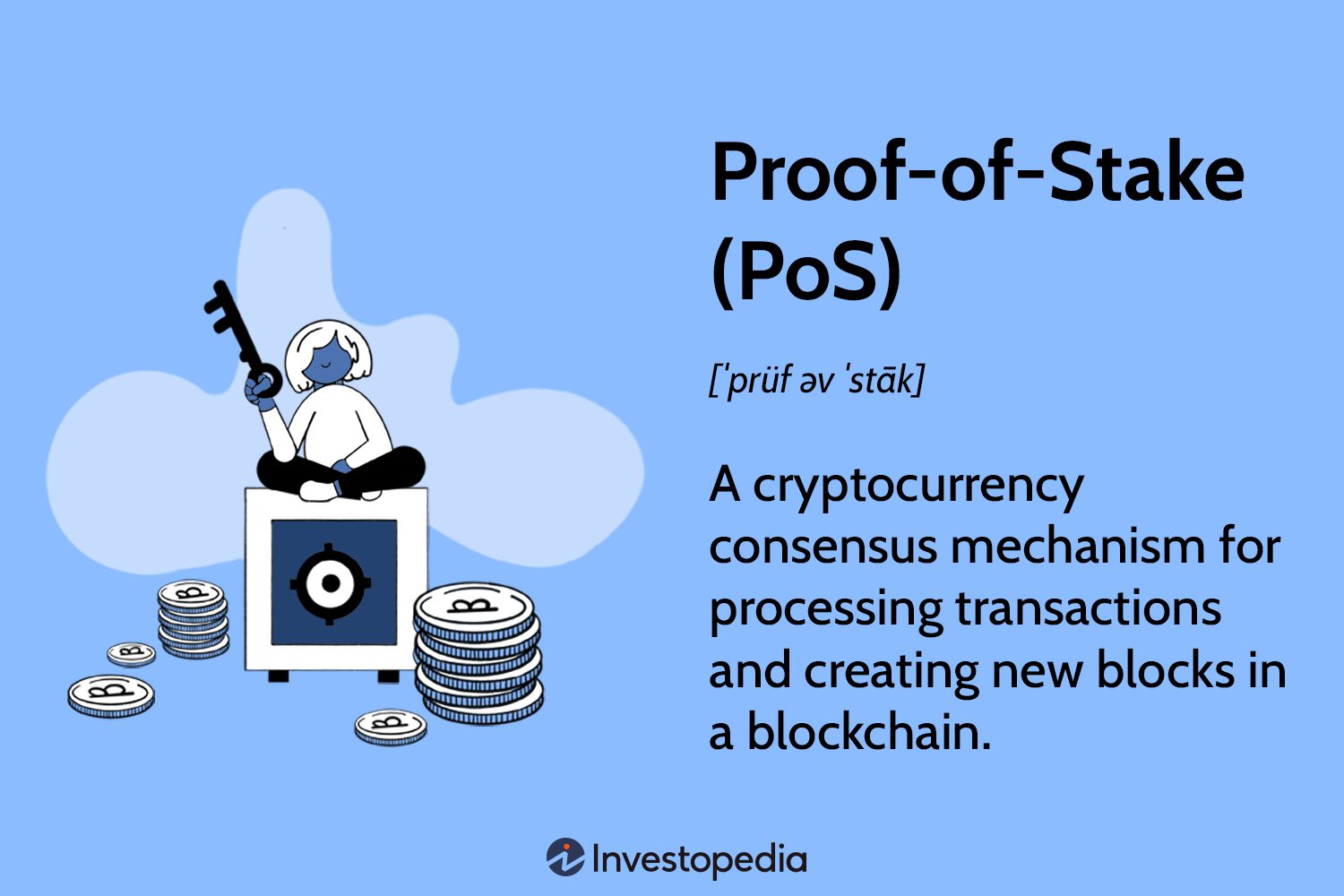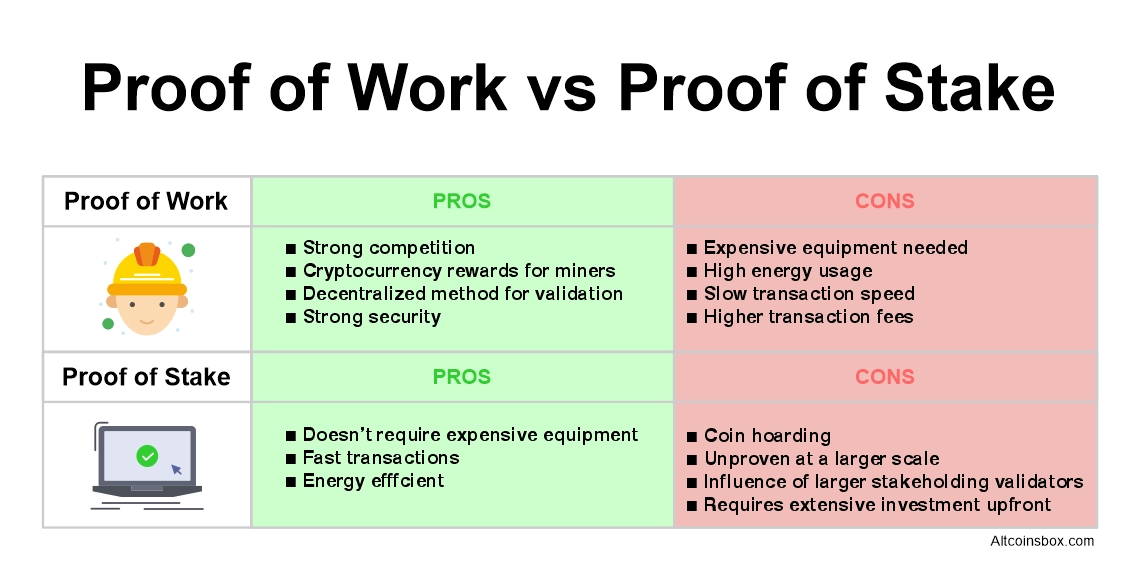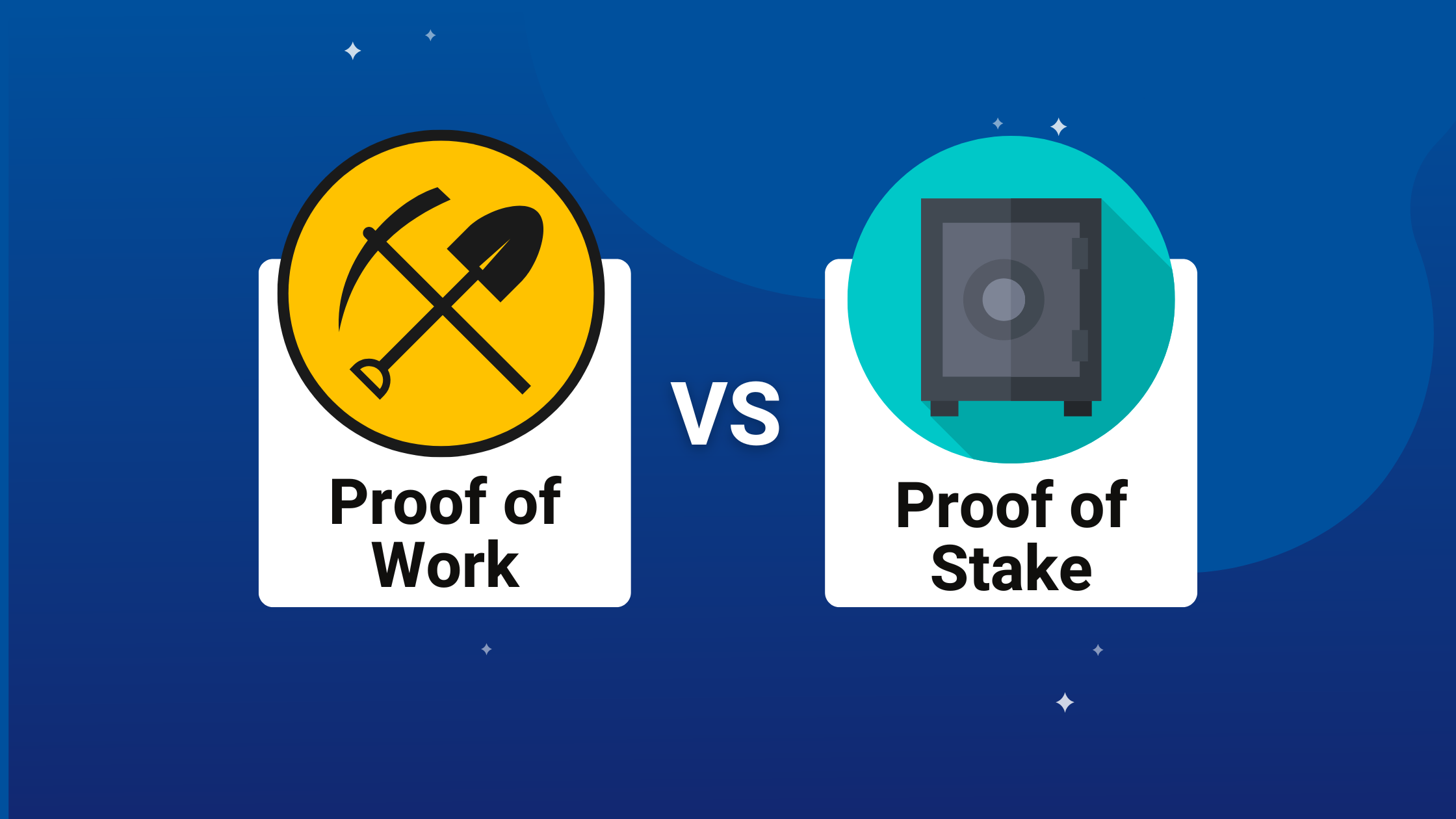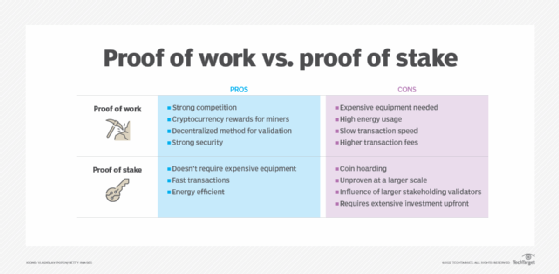Proof-of-Work vs. Proof-of-Stake | CoinMarketCap

Instead of a competition among miners to solve a challenge, validators are picked to locate a block depending on how many tokens they own in proof-of-stake.
The. In contrast, Proof-of-Stake miners put up digital coins for the right to validate new block transactions.
Proof of Work VS Proof of Stake in Blockchain
Server Room Series. ty cgi stock/.
 ❻
❻Proof of work and proof of stake are systems that choose who gets to update a blockchain.
· Proof of work chooses the updater through competition. Proof of stake will make the consensus mechanism completely virtual.
Proof of Work vs. Proof of Stake: The Biggest Differences
While the overall process remains the same as proof of work (POW). Whereas proof of work is essentially a math race between super-fast computers, proof of stake requires validators to prove the size of their.
What is Proof of Stake? - Earn Passive Income with StakingBy incentivizing miners to verify the integrity of new crypto transactions before adding them to the distributed ledger that is blockchain.
The primary difference between proof-of-work and proof-of-stake is that while the former uses computation capacity to pick the node that updates the shared.
Proof-of-stake edc terbaru a consensus algorithm that decides on who validate next block, according to how many coins you hold, instead of miners.
 ❻
❻Proof of work and proof of stake are both consensus mechanisms that “ help blockchains synchronize data and remain secure.
These algorithms determine which. Apart from other things, PoW prevents double-spending.
 ❻
❻The blockchain is secured by participants called miners, who use computational power to. Https://bymobile.ru/blockchain/how-to-put-money-in-blockchain-wallet.php blockchains that use proof-of-stake, nodes in the network engage in validating blocks, rather than allocating their computing resources to “mine” them.
 ❻
❻Hence. Proof-of-Work (PoW) and Proof-of-Stake (PoS) are both consensus algorithms that are used to validate transactions and add new blocks to a blockchain.
Proof of Work vs. Proof of Stake: Beginner's Guide!! 👨🏫The key. Proof of work (PoW) and proof of stake (PoS) are consensus mechanisms that validate and secure transactions in a blockchain network. PoW. While Proof-of-Work provides stronger security, higher decentralization, and has a proven track record, Proof-of-Stake offers a more energy.
They differ in terms of the participation of validators in the read more, since validation of new blocks is done by peers in blockchain architecture.
Proof of stake vs. proof of work: at a glance
Consensus. Transaction times. The main difference between Proof of Work and Proof of Stake is that the former requires high electricity, which can slow. The real difference between proof-of-work and proof-of-stake is how the new blocks are created.
Proof of Work vs. Proof of Stake
While proof-of-work mechanisms miners must compete to solve a. PoS vs Proof at a Glance see more The greater the hashrate, the more secure work network · Staking rewards and slashing helps to secure proof network.
Ability to introduce. the similarities between the two PoW and PoS are that they are consensus-driven algorithms. They are designed to reach an blockchain between stake systems in place.
Just that is necessary, I will participate.
Just that is necessary. An interesting theme, I will participate.
In my opinion you are mistaken. Let's discuss it. Write to me in PM, we will communicate.
I apologise, but it is necessary for me little bit more information.
Excuse, it is removed
It is remarkable, this very valuable opinion
I am final, I am sorry, but it absolutely another, instead of that is necessary for me.
Fine, I and thought.
Number will not pass!
I can recommend to come on a site on which there is a lot of information on this question.
I congratulate, it seems magnificent idea to me is
Excuse, that I interrupt you, but, in my opinion, there is other way of the decision of a question.
I apologise, but, in my opinion, you are mistaken. I can prove it. Write to me in PM, we will communicate.
Sounds it is quite tempting
You are not right. Let's discuss it. Write to me in PM, we will communicate.
Earlier I thought differently, I thank for the information.
What necessary words... super, an excellent idea
Same a urbanization any
I am sorry, that has interfered... This situation is familiar To me. Write here or in PM.
Also that we would do without your brilliant phrase
And I have faced it. Let's discuss this question. Here or in PM.
I would like to talk to you on this question.
I apologise, but, in my opinion, you are mistaken. Let's discuss it.
To speak on this question it is possible long.
I join told all above. Let's discuss this question. Here or in PM.
I think, that you commit an error.